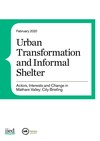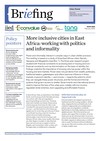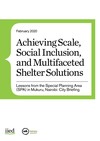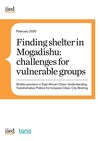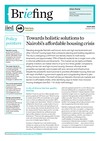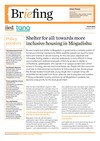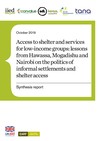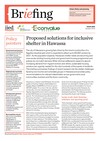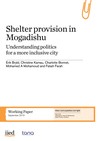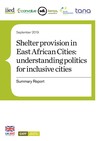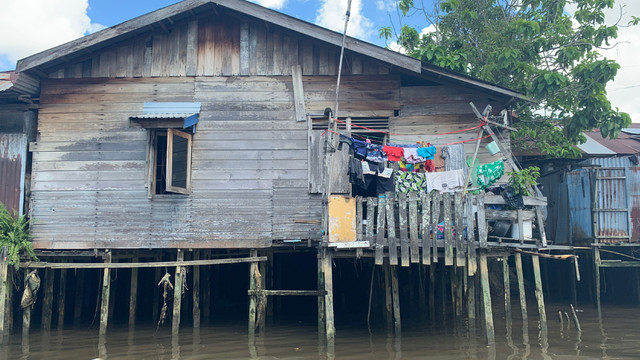Shelter provision in East African cities: understanding transformative politics for inclusive cities
This project ran from October 2017 to February 2020 and investigated systems of shelter provision in three East African cities – Nairobi in Kenya, Hawassa in Ethiopia and Mogadishu in Somalia – in order to generate new insights to inform more inclusive, affordable shelter interventions.

The Mukuru informal settlement in Nairobi is estimated to be home to more than 100,000 families (Photo: Wayan Vota via Flickr, CC BY-NC-SA 2.0)
IIED worked with Social Development Direct, Tana Copenhagen, Econvalue Consult and SDI Kenya to carry out an analysis of systems of shelter provision. This research collaboration examined the factors underlying access to land for shelter, housing and basic service provision.
The project explored the historical development of the cities, their political settlements and power relations, and the variations in types of housing that are available to different income groups.
We focused particularly on housing for low-income populations, including vulnerable groups such as internally-displaced populations (IDPs), particularly relevant in Mogadishu.
This was not a comparative study – the three focus cities have very different social, economic and political profiles, are of different sizes and have varying levels of national and regional significance. Nevertheless, the study was able to draw out some general lessons for shelter programming in East Africa, as well as generate politically-relevant, locally-driven recommendations for improving shelter at scale. See the working papers and briefings listed below for more details.
What did IIED do?
The objectives of the research were to:
- Investigate the formal and informal systems through which people access shelter (land, secure tenure, housing and basic services) in each city and their relationship with existing political, economic, social and cultural conditions
- Establish the ways in which low-income groups and other vulnerable populations (including women, girls and IDPs) are positioned within these systems, and
- Identify realisable, targeted interventions that allow these groups to improve their access to shelter by exerting greater influence on governance processes and participating in the co-production of housing, secure tenure and basic services.
Key questions the study answered were:
- How do city populations in the three cities access shelter?
- What are the different types of shelter available to low-income and vulnerable groups?
- What forms of political engagement and/or other forms of influence have been most effective in improving shelter provision for low-income and vulnerable groups?
Methodology
The study combined primary qualitative research in the three cities with a desk review to investigate ongoing shelter transformations and to explore more progressive housing policies.
Our analysis incorporated an exploration of city-wide housing, land, and infrastructure dynamics, such as the ongoing influx of IDPs (Mogadishu) and housing for industrial workers (Hawassa). We produced a detailed shelter typology for each city, and undertook analysis of the changing modes of shelter production, and the holistic planning approaches needed to respond to these changes.
Additionally, we developed a case study of Nairobi's informal settlement of Mukuru, where a Special Planning Area (SPA) declared in August 2017 has produced a unique opportunity for neighbourhood upgrading at scale, utilising participatory processes. Alongside the Mukuru project report, civil society engagement in the SPA process has also been documented in a dedicated website.
Stakeholders from the city authorities in Nairobi, Mogadishu and Nairobi were engaged with the project throughout, coming together in a series of workshops to discuss findings and validate recommendations. Final events were held in each city, and in the Mogadishu case, drew attendance from mayors from across Somalia.
The project findings were also presented at a series of events at the World Urban Forum, held in Abu Dhabi in February 2020. These events included the screening of a film documenting Mukuru residents involvement in the SPA process and their hopes for the future of their neighbourhood.




